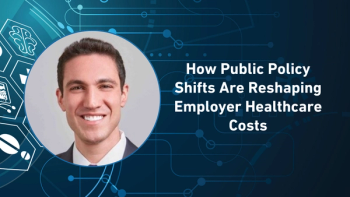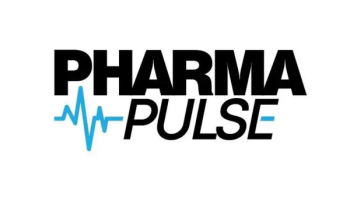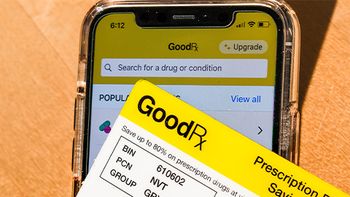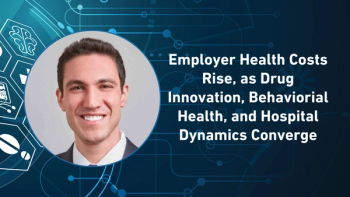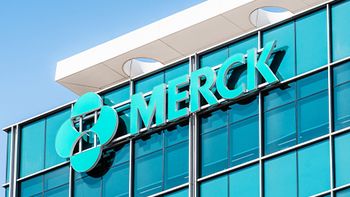
Ways Pharma Supply Chains Can Cut Scope 3 Emissions Now
In the final part of her Pharma Commerce video interview, Heather Zenk, Cencora’s president of US supply chain, outlines practical, cost-conscious strategies for reducing Scope 3 emissions in pharma supply chains, from smarter warehouse lighting and returnable cold chain packaging, to order consolidation and AI-enabled delivery optimization.
In a video interview with Pharma Commerce, Heather Zenk, Cencora’s president of US supply chain, describes how today's distribution networks must seamlessly connect manufacturers to care sites that range from large academic centers to rural pharmacies and physician offices. This “last mile” delivery is essential because, as Zenk notes, “all healthcare is local.” Patients want access to advanced therapies close to home, and distributors play a critical role in making that happen.
A major focus in this effort is maintaining product integrity, especially for cold chain items that must be stored between 2–8°C. Innovations in cold chain management now go beyond temperature tracking; they include predictive maintenance of infrastructure such as freezers and compressors. Distributors not only monitor product temperature but also evaluate the performance and potential failure risks of the equipment that manages the cold chain environment.
Zenk emphasizes the importance of marrying manufacturer data with real-time logistics. For example, if a care site accidentally stores a cold chain product outside the optimal range for a short period, data from the manufacturer can often confirm whether the product remains viable. This responsiveness supports safe patient care and reduces waste.
Another important innovation is the use of reusable cold chain totes, which service over 90% of the US market. These require robust freezing systems and operational oversight to ensure readiness and reliability. Zenk underscores that preventing failure, rather than simply reacting to it, is the next frontier in pharmaceutical distribution. By using data-driven insights and predictive engineering, the distribution process becomes more resilient, ensuring that patients can access vital therapies without delay or compromise.
She also comments on the advanced technologies that are proving most effective in enhancing real-time visibility and operational efficiency; strategies organizations should prioritize to ensure compliance while minimizing disruptions for manufacturers and providers as the DSCSA compliance date approaches; lessons learned from recent drug shortages and global disruptions; the practical steps that can be taken in transportation, packaging, and warehousing to meet sustainability goals without compromising reliability or cost-effectiveness; and much more.
A transcript of her conversation with PC can be found below.
PC: Reducing Scope 3 emissions remains a major challenge for pharma supply chains. What practical steps can be taken in transportation, packaging, and warehousing to meet sustainability goals without compromising reliability or cost-effectiveness?
Zenk: There's some kind of basic things. One, inside the warehouse space. How are we using energy? Can we use solar? Can we do something as simple as having motion detector lights that come on and off? If you're not having to go down three aisles in a warehouse, could we have the lights shut off? It sounds very basic and very kind of 1981, but not everyone's doing it. And those are things that are available to do. You just got to put in a little bit of elbow grease and do it. And looking at newer HVAC models that have new ways where they can use water to recycle, to heat and cool, those types of pieces of equipment are 10% more, but your return on investment on that is under two years. Some of these really basic things from a warehouse is like that.
The other is, when can we use a returnable transportation package that can either be in the cold chain space or that can be in the ambient space, and where do we continue to use that to move through the channel? That’s something clearly. The other thing is any of the materials that go inside a cold chain asset, so phase change material, which is the gels or the packs that go into the cold chain, or sometimes, we see those come in with ambient at times. We may need to use those to keep something in an ambient temperature or check humidity. For those, we’re using reliable vegetable-based phase change material, which I will admit, does not look fantastic. It looks a little bit like a child's diaper sometimes inside.
It’s not the most pretty to use, things like that inside the warehouse. I think outside, it's other things. We are also scratching on our business. Can we consolidate totes? That also sounds very basic, but if a customer is maybe placing four orders a day because they have four different sites of care, or in a building, four different RNs or four different pharmacies are ordering. Could we consolidate that all into one shipment instead of sending four different packages?
We're asking those kinds of questions of our customer base too, and then also, do you need two deliveries, just some of those savings. Then, of course, the obvious around we're looking into the big things like EVs, electric vehicles. We're looking into new packaging ways. Some of the new packaging isn't right at the economical price point that it needs to be at the scale and volume, but when will it get there? How do we stay on top of that? AI is the topic of it too—can AI help us consolidate orders, or can it alert the site?
This is your sixth order you place today. Would you like everything to come into one? We have some sites that want shipments broken out by maybe the aisle in the pharmacy that the products are in so they can put them away. It helps them with workflow, but is that at the expense of getting 18 totes, or would you like four? We're letting them make those choices where before those weren't choices they could make. We also started to talk to some of the sites. Would you like, maybe for them, would you like shipments two times a week, instead of five days a week? We’re really working on, how do we integrate further into the supply chain, and same with our manufacturers, could we get two shipments a month instead of four shipments a month? Would that help them with they have to come twice, so we're not using as much energy.
Those are things we're all looking at, if we can make the economics the same, make everything viable. And those aren't easy things. Those are just collaborative, grind it out, but it helps immensely with Scope 3, and then it gets out of some of these really large, yes, we're looking at EVs, and we're looking at all that, but these other things that are just elbow grease, hard work to do, are going to drive it in the future, versus the one big thing that's going to happen later on.
Newsletter
Stay ahead in the life sciences industry with Pharmaceutical Commerce, the latest news, trends, and strategies in drug distribution, commercialization, and market access.

